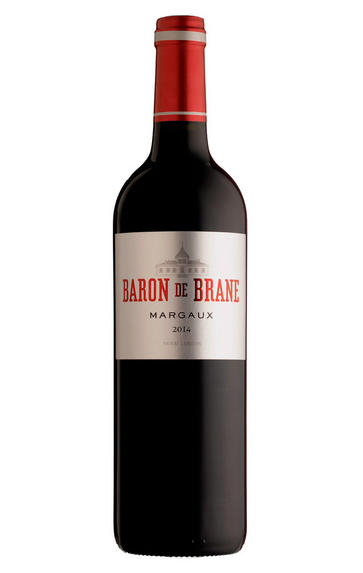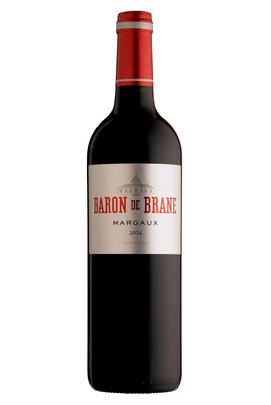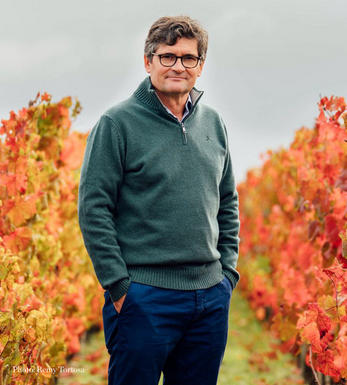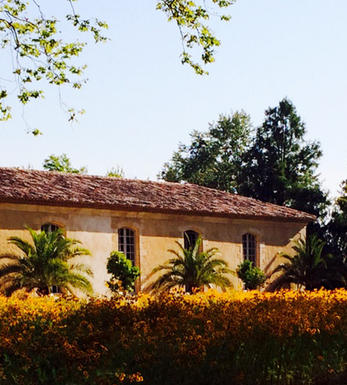
2014 Baron de Brane, Margaux, Bordeaux

Critics reviews
The 2014 Baron de Brane displays scents of brambly red berry fruit, mocha and hints of espresso on the well-defined nose. The medium-bodied palate offers fine tannin and a straightforward, tobacco-tinged and lightly spiced finish. The most elegant Baron de Brane in recent years.
Drink 2019 - 2024
Neal Martin, Vinous.com (January 2019)
The 2014 Baron de Brane is a pleasant, fruity second wine to drink now and over the next few years while the flavours retain a measure of brightness. I would not wait too long.
Antonio Galloni, Vinous.com (February 2017)
A late harvest which favoured Cabernet Sauvignon, which is why so much of it went into the grand vin. So this second wine has a higher proportion of Merlot, and a tiny amount of Carmenère (0.5%) which was starting to reach maturity in the vineyard at this point. It's still extremely young at almost four years old and needs another few years to fully soften out, but it's proof of the quality at Brane right now.
Drink 2019 - 2026
Jane Anson, Decanter.com (November 2017)
Transparent garnet. Light but well-balanced, well-integrated nose. Followed up by decent fruit on the palate with some energy and lift. Respectable if not exactly thrilling.
Drink 2022 - 2030
Jancis Robinson MW, JancisRobinson.com (November 2023)
Quite oaky, but this has a lot of tannic power, berry fruits and freshness that will carry this far into the future. Turns fruity and polished. Second wine of Brane-Cantenac.
Drink in 2020
James Suckling, JamesSuckling.com (February 2017)
About this WINE

Chateau Brane-Cantenac
Château Brane-Cantenac was for many years the home of Lucien Lurton - it is now owned and run by his son Henri. Its vineyards are located west of the village of Cantenac in the Margaux appellation. Brane-Cantenac's vineyards are planted with Cabernet Sauvignon (55%), Merlot (40%), Cabernet Franc (4.5%) and Carmenère 0,5%, and lie on fine, gravelly soils. Vinification includes up to 18 months' wood ageing, a third to a half in new `barriques'.
Brane Cantenac was perceived throughout much of the 70s and 80s as an underperforming property. Since Henri took over, there has been extensive investment in the cuverie and chai, as well as vastly improved vineyard management techniques. Consequently, the wines at Brane Cantenac now show more weight and concentration, although they still possess that haunting bouquet and quintessential elegance that characterise the wines of Margaux. It is classified as a 2ème Cru Classé.

Margaux
If Pauillac can be seen as the bastion of ‘traditional’ Red Bordeaux, then Margaux represents its other facet in producing wines that are among Bordeaux’s most sensual and alluring. It is the largest commune in the Médoc, encompassing the communes of Cantenac, Soussans, Arsac and Labaude, in addition to Margaux itself. Located in the centre of the Haut-Médoc, Margaux is the closest of the important communes to the city of Bordeaux.
The soils in Margaux are the lightest and most gravelly of the Médoc, with some also containing a high percentage of sand. Vineyards located in Cantenac and Margaux make up the core of the appelation with the best vineyard sites being located on well-drained slopes, whose lighter soils give Margaux its deft touch and silky perfumes. Further away from the water, there is a greater clay content and the wines are less dramatically perfumed.
Margaux is the most diffuse of all the Médoc appelations with a reputation for scaling the heights with irreproachable wines such as Ch. Margaux and Ch. Palmer, but also plumbing the depths, with too many other châteaux not fulfilling their potential. There has been an upward shift in recent years, but the appellation cannot yet boast the reliability of St Julien. However, the finest Margaux are exquisitely perfumed and models of refinement and subtlety which have few parallels in Bordeaux.
Recommended Châteaux: Ch. Margaux, Ch. Palmer, Ch. Brane-Cantenac, Ch. Rauzan-Ségla , Ch. Dufort-Vivens, Ch. Ferrière, Ch. du Tertre, Ch. Giscours, Ch. d'Angludet.

Cabernet Sauvignon Blend
Cabernet Sauvignon lends itself particularly well in blends with Merlot. This is actually the archetypal Bordeaux blend, though in different proportions in the sub-regions and sometimes topped up with Cabernet Franc, Malbec, and Petit Verdot.
In the Médoc and Graves the percentage of Cabernet Sauvignon in the blend can range from 95% (Mouton-Rothschild) to as low as 40%. It is particularly suited to the dry, warm, free- draining, gravel-rich soils and is responsible for the redolent cassis characteristics as well as the depth of colour, tannic structure and pronounced acidity of Médoc wines. However 100% Cabernet Sauvignon wines can be slightly hollow-tasting in the middle palate and Merlot with its generous, fleshy fruit flavours acts as a perfect foil by filling in this cavity.
In St-Emilion and Pomerol, the blends are Merlot dominated as Cabernet Sauvignon can struggle to ripen there - when it is included, it adds structure and body to the wine. Sassicaia is the most famous Bordeaux blend in Italy and has spawned many imitations, whereby the blend is now firmly established in the New World and particularly in California and Australia.


Buying options
Add to wishlist
Description
The second wine of Château Brane Cantenac (2éme Cru Classé), the 2014 Baron de Brane consists of 60% Merlot and 30% Cabernet Sauvignon with small additions of Cabernet Franc and Carmenère that add depth and flavour dimension to the final wine. Black cherry, cassis and coffee all jump out of the glass, combining with a punchy palate full of dark ripe fruits. There is a touch of tobacco that provides a warming spice to the finish, while silky, ripe tannins create a rich and glossy mouthfeel. This is a very good example of the quality you can find from a property’s second wine.
Drink 2023 - 2026
Olly Hallworth, Buying Assistant, Berry Bros. & Rudd
wine at a glance
Delivery and quality guarantee